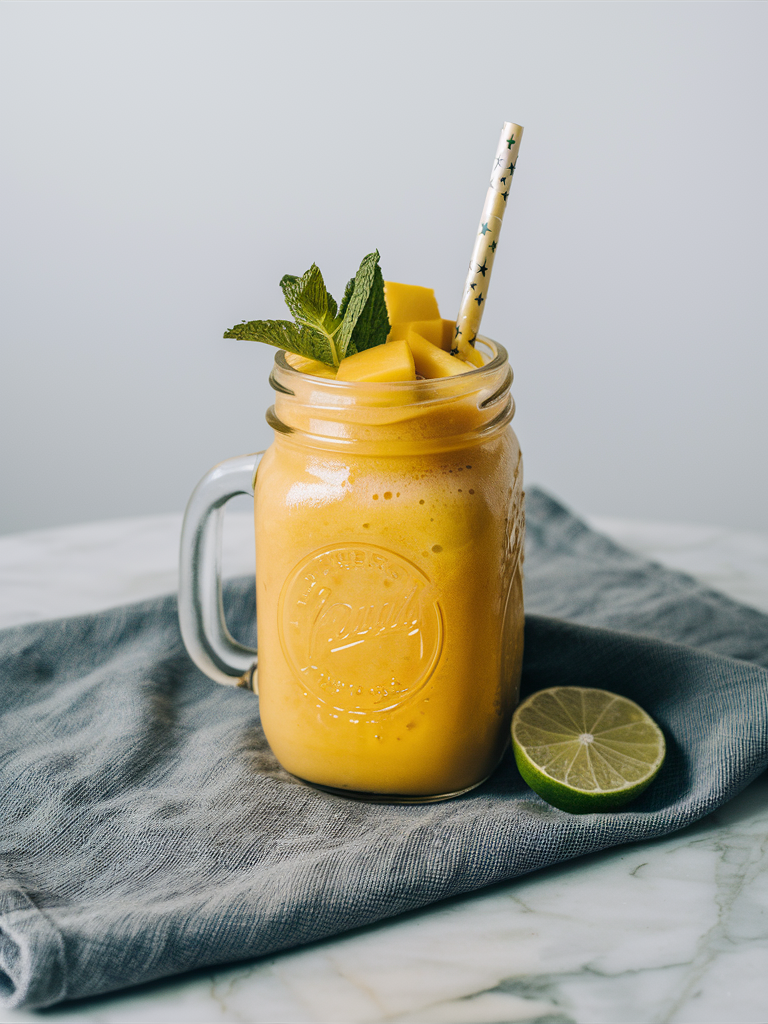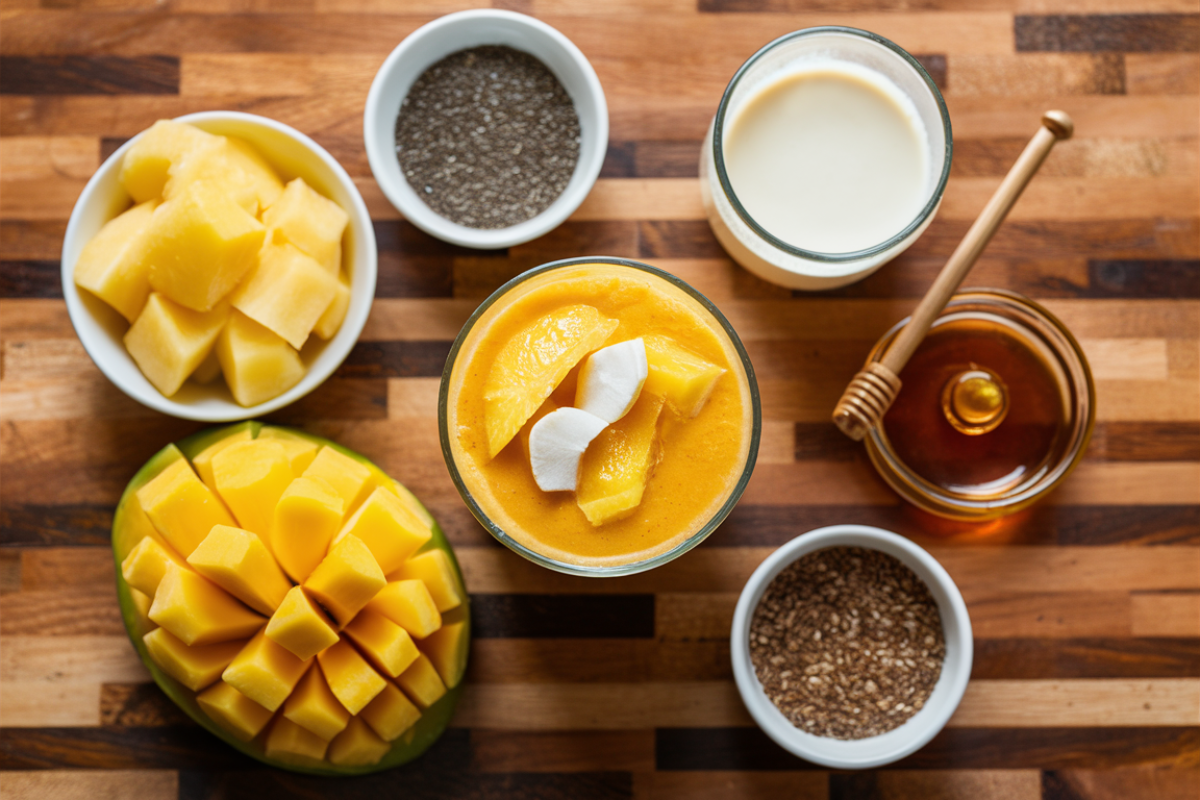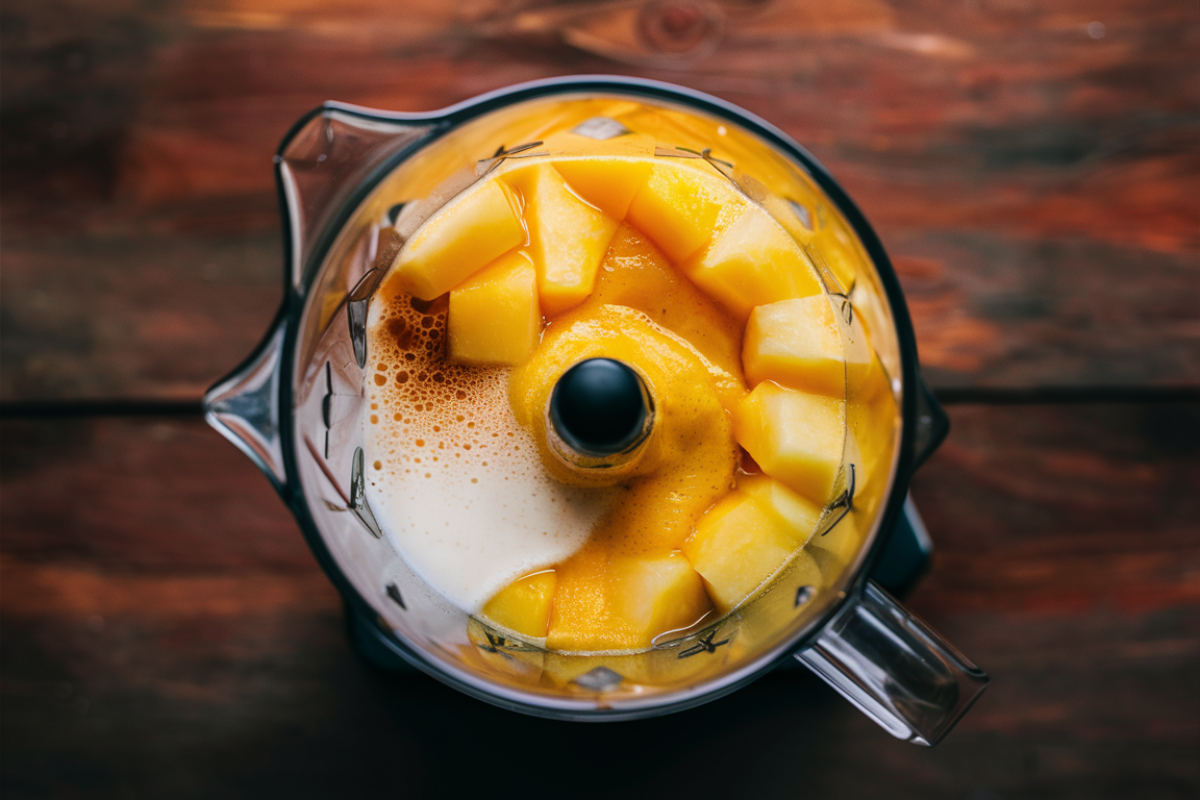Tips and Troubleshooting
Tips for Perfect Mango Smoothies
Creating the perfect mango smoothie without banana involves a few key techniques:
- Achieving the Right Consistency: To get a smooth, creamy texture, blend your ingredients until they are completely combined. If the smoothie is too thick, add a bit more milk. If it’s too thin, add more mango or a handful of ice.
- Sweetening Naturally: Instead of adding sugar, use natural sweeteners like honey, maple syrup, or a splash of orange juice. Ripe mangoes are naturally sweet, so you may not need additional sweeteners.
- Balancing Flavors and Adjusting Taste: Taste your smoothie before serving. If it’s too tart, add a bit more honey. If it’s too sweet, add a squeeze of lime juice. You can also balance flavors by adding a pinch of salt or a few fresh mint leaves for a refreshing twist.
By following these tips, you can customize your smoothie to your liking and ensure it’s always delicious and satisfying.
Common Mistakes and How to Avoid Them
Even with the best intentions, it’s easy to make mistakes when crafting your smoothie. Here are some common pitfalls and how to avoid them:
- Using Unripe Mangoes: Unripe mangoes can be sour and hard to blend. Make sure your mangoes are ripe and sweet for the best flavor and texture.
- Overloading the Blender: Adding too many ingredients at once can overwhelm your blender and result in a lumpy smoothie. Blend in stages if needed, and ensure everything is thoroughly mixed.
- Neglecting to Blend Properly: Not blending long enough can leave chunks of fruit or ice. Blend until the mixture is completely smooth.
- Ignoring Balance of Ingredients: Too much liquid can make your smoothie watery, while too many solid ingredients can make it too thick. Adjust as needed to get the right balance.
Avoiding these common mistakes will help you make a perfect mango smoothie without banana every time.
Nutritional Content
Understanding the nutritional content of your mango smoothie without banana is essential for maintaining a balanced diet. Here’s a breakdown of the nutritional values per 100 grams of a basic mango smoothie:
| Nutrient | Amount per 100g |
|---|---|
| Calories | 60 kcal |
| Protein | 1.2 g |
| Carbohydrates | 15 g |
| Fiber | 1.5 g |
| Sugars | 13 g |
| Fat | 0.5 g |
| Vitamin A | 54 µg |
| Vitamin C | 36 mg |
| Calcium | 10 mg |
| Iron | 0.2 mg |
FAQs
What can I use instead of banana in a smoothie?
If you’re looking for alternatives to banana, you can use avocado, mango, or even silken tofu to achieve a creamy texture. Each of these options will give your smoothie a different flavor and consistency, so feel free to experiment and find what works best for you.
How can I make my smoothie thicker without banana?
To thicken your smoothie without banana, try using frozen fruits, Greek yogurt, or adding a tablespoon of chia seeds or flaxseeds. These ingredients will give your smoothie a thicker, creamier texture without needing banana.
Are mango smoothies good for weight loss?
Yes, mango smoothies can be a healthy addition to a weight loss diet. Mangoes are low in calories but high in fiber, which helps you feel full longer. However, be mindful of the other ingredients you add, such as sweeteners or high-fat dairy products, which can increase the calorie count.
Can I prepare mango smoothies in advance?
Yes, you can prepare mango smoothies in advance. Store them in an airtight container in the refrigerator for up to 24 hours. Give the smoothie a good shake or stir before drinking, as some separation may occur.
How do I store leftover mango smoothies?
Leftover mango smoothies should be stored in an airtight container in the refrigerator and consumed within 24 hours. If you need to store them for longer, consider freezing them in ice cube trays and blending them again when you’re ready to enjoy.



